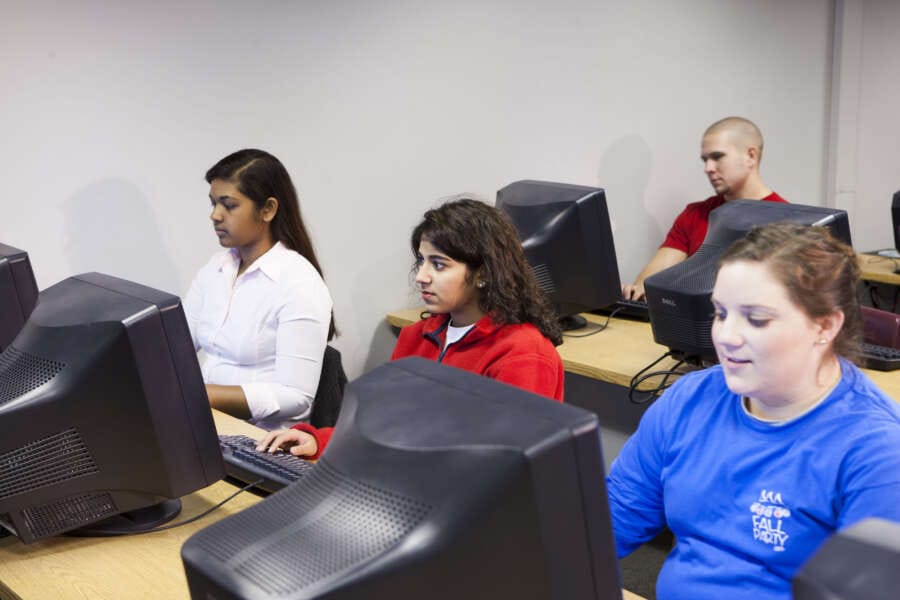

By Paul Gentile, Senior Director of Product Marketing at LogMeIn
The student experience of the past academic year has been like no other. As final grades are confirmed and graduation plans announced, students and staff reflect on a year where lecturers and teaching faculty members turned to technology to ensure students receive the same standard of education, and creativity in the virtual classroom became more important than ever to keep students engaged. And as many now look to the next academic year, the University of Manchester has become the first institution to announce that online lectures are here to stay, and more will likely follow their lead.
Despite these challenging and turbulent times, many academics and university lecturers are choosing to view this large-scale digital transformation as an exciting opportunity. For many it has presented an opportunity to create and revise existing content to ensure it is, not only engaging and challenging for students, but has long-term potential.
Tech and teaching for a blended learning model
Combining technology and teaching isn’t a new concept, but it has been accelerated as a result of the pandemic, with this style of teaching offering an opportunity to provide a bespoke experience to suit the learning styles of every student. The blended learning approach combines online educational materials and opportunities for interaction online with traditional place-based classroom methods.
A huge benefit of this approach to teaching is that it has allowed schools and universities to offer greater flexibility for their students. For example, many universities extended their in-person teaching hours to help facilitate social distancing in labs, having the option to attend mandatory tutorials at varying times throughout the day also proved invaluable for mature students and those with external commitments. Meanwhile, with online teaching, students had the option to revisit recorded content to help prepare for examinations and assessments and access to 1:1 online sessions with tutors for additional support, all at a time that suited them.
Dr Gareth Healey is a senior lecturer at Swansea University Medical school who has been utilising collaborative technology, not only for his teaching, but also for research and business development opportunities, is excited about the flexibility this offers.
“Outside of teaching we have been utilising collaborative technology to expand our university business network combining pioneering technology, research facilities and scientific expertise with leading healthcare businesses to develop essential new medical and pharmaceutical products. Now we are looking at ways that we can bring this technology into the classroom, connecting our students with global experts in their field and utilise features such as live polling and attendance tracking to help us support them.”
Keeping connected is key
Prior to COVID-19 video-enabled room technology was typically associated with corporate meeting rooms and business technology. But now as schools and universities have been forced to get creative in order to be able to facilitate social distancing measures and student safety, we are beginning to see the benefits of this technology for the classroom.
Malden Catholic was the first high school in Massachusetts, United States, to utilise a whole portfolio of collaborative technology to ensure that both remote and live students had a front row sear for their education, while maintaining social distancing and experiencing full in-class coursework. With features such as intelligent video framing capabilities that follow the teacher’s movement and highlight the flow of conversation by learning who is talking. It can reframe the scene on the speaker while keeping everyone else in view, so even remote students feel connected. A whiteboard view even allowed teachers to broadcast the board image to remote students and share notes in real time. Plus, with the option to access recorded sessions that have been automatically transcribed with captions, the classic ‘missed the lesson’ excuse no longer applied.
John K, Thornburg, Malden Catholic Headmaster, views this technology as the perfect partner for keeping students and staff engaged.
“Through the use of collaborative technology, Malden Catholic was able to move to distance learning without missing a beat and now we can create a stimulating and safe classroom designed for seamless faculty and student engagement. In these challenging and uncertain times, this technology is the way to guarantee that our students’ education will not be compromised”
Anxious uncertainty or an exciting future for education?
Although the model for the future of education is currently unclear, the possibility of a blended learning approach opens new, exciting doors for staff and students. The whole education experience has being redefined. Prior to COVID-19, remote learning was reserved for mature or part-time students, it was never expected to go mainstream. And before now this style of learning may have been viewed as less effective than in-class teaching, but with the right mindset and technology in place this doesn’t have to be the case.
With a multitude of virtual teaching techniques available, learners now have more options than ever before, resulting in greater engagement, more challenging opportunities and learning that can cater for a wider range of needs. There is so much more to education than what is taught in the classroom and today’s technology will set students up to take learning to the next level – beyond the confines of the physical classroom.


